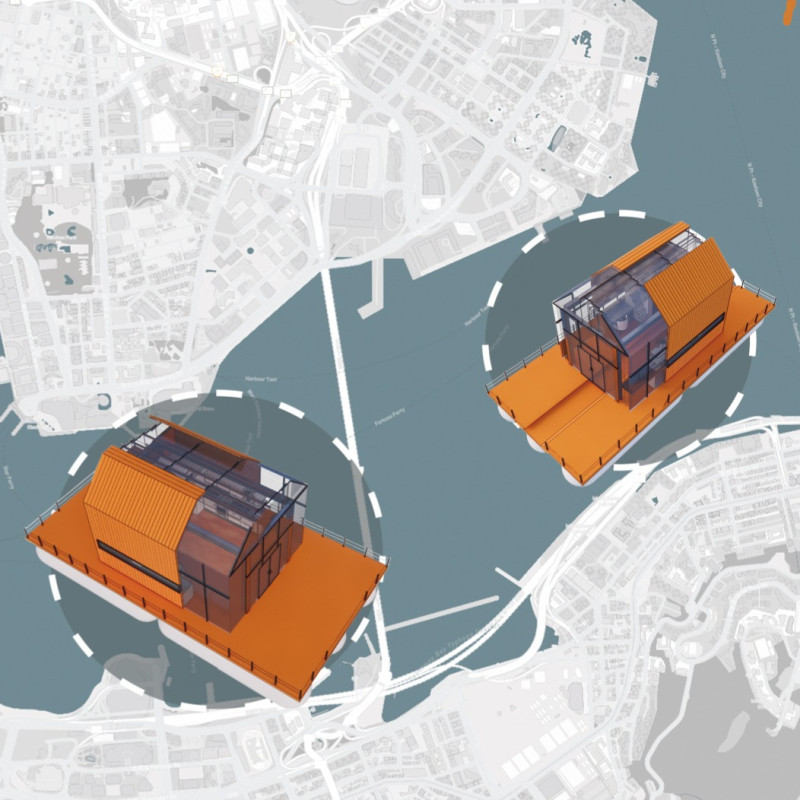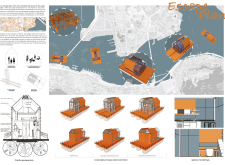5 key facts about this project
### Overview
The project addresses challenges associated with urban density by proposing innovative living solutions that integrate residential spaces with aquatic environments. Designed for coastal cities with extensive waterways, the proposal envisions modular floating homes that facilitate a transition from traditional urban living to an adaptive, water-based lifestyle. This design aims to reclaim the connection to nature often lost in metropolitan settings, providing urban dwellers—specifically young couples—a serene alternative to crowded city life.
### Spatial Configuration
The architecture is organized around modular floating homes constructed on buoyant platforms. This layout encourages fluid interactions between indoor and outdoor areas, featuring expansive decks that enhance leisure and social engagement. Variations in design allow residents to select configurations tailored to individual needs and preferences, reflecting current trends in spatial adaptability and contemporary living dynamics. The arrangement aims to foster a sense of community while also accommodating personal privacy, reminiscent of the best qualities of close-knit neighborhoods.
### Materiality and Sustainability
The homes utilize sustainable materials, primarily timber for structural elements, which promotes warmth and aligns with eco-friendly practices due to its renewability. Extensive glass facades permit natural light to flood the interiors, enhancing the connection between residents and their aquatic environment, while minimizing the disconnection often felt in dense urban spaces. Floating platforms made of polystyrene ensure stability and adaptability to changing water levels. Together, these design choices create a low-impact living environment that supports both ecological balance and psychological well-being, emphasizing a harmonious relationship with nature.


















































